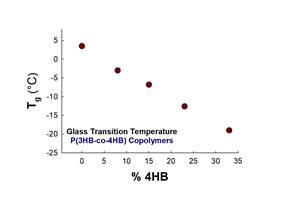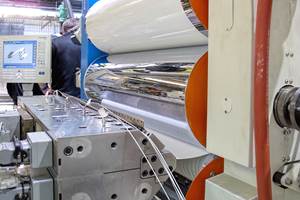Are Blown Film Processors Getting The Biggest Bang for Their Resin Buck?
Decades-old extrusion equipment may be holding some processors back, says Alpine exec Nunes.
North America looks like a good place to process plastics these days. The polyolefins business is by most accounts booming. New plants are opening, bringing with them more resin capacity and more finely-tuned polymers. Opportunities for flexible packages beckon on a global basis. But North American blown film processors may not be fully taking advantage of what these materials and new market opportunities are offering. Why? Two words: Old equipment.
Such is the viewpoint of David Nunes, president of Hosokawa Alpine American (Booth W1971), a leading supplier of extrusion technology for the high-end of the blown-film market. “What we tell our customers is simply this: ‘Don’t fall in love with your assets. They don’t love you back. In fact, they hold you back.’”
Nunes figures that more than half of the 15-20 billion lb of PE consumed for film annually is run through machines that are 10-20 years old, or older. By most estimates, resin accounts for at least 70% of a film processor’s overall expenses, and Nunes makes a compelling argument that film producers are leaving money and opportunities on the table if they continue to process on equipment that doesn't offer the latest capabilities in throughput, gauge control and quality. Alpine is coming off another record-breaking year in sales—with a considerable backlog in the pipeline—but Nunes contends that many film producers are hanging onto assets under the mistaken presumption that they are saving money.
“When you buy new equipment technology you’re investing to make your operation more productive, efficient and, most importantly, profitable,” he says. “Replacing 20-yr-old machinery with the superior technology available today will provide significant output gains that minimize labor and overhead costs. Additional collateral benefits include dramatic improvements in efficiency and quality that improve downstream printing, laminating and converting.”
Nunes is a proponent of the benefits of “incremental capacity,” which he says he heard first from long-time film extrusion executive Bill Seanor, now CEO of Overwraps Packaging. He explains: “Let’s say you have a line running at a rate of X lb/yr, and you invest in technology that gets you 1 million lb more. In that scenario, your only incremental cost is resin. So whatever your spread is between your cost of resin and your sales price per pound goes straight to the bottom line. The math is really simple.”
Since K2010, Nunes is also among those machinery and materials suppliers advocating “five as the new three,” referring to the number of discrete layers in a film structure. The idea is processors can improve performance, get into new markets, and increase the sustainability of their operation—a key for brand owners—by making the jump from three-layer to five-layer blown film technology for non-barrier applications.
Yet while there has been some movement among processors in this direction, there is still a tremendous amount of mono- and three-layer capacity in the market, Nunes notes. “Material companies have done a great job developing new resins, and advances in blown-film equipment just over the past few years have been extraordinary in terms of output, stability, flexibility, gauge control and more. And while many film producers are doing a great job of reinvesting, there is a long way to go before the total installed base in North America is updated so that processors can compete in the global marketplace.”
Related Content
Pregis Performance Flexibles: In the ‘Wow’ Business
Pregis went big and bold with investment in a brand-new, state-of-the-art plant and spent big on expanding an existing facility. High-tech lines, well-known leadership and a commitment to sustainability are bringing the “wow” factor to blown film.
Read MoreFormulating LLDPE/LDPE Blends For Abuse–Resistant Blown Film
A new study shows how the type and amount of LDPE in blends with LLDPE affect the processing and strength/toughness properties of blown film. Data are shown for both LDPE-rich and LLDPE-rich blends.
Read MoreFilm Extrusion: Boost Mechanical Properties and Rate of Composting by Blending Amorphous PHA into PLA
A unique amorphous PHA has been shown to enhance the mechanical performance and accelerate the biodegradation of other compostable polymers PLA in blown film.
Read MoreRoll Cooling: Understand the Three Heat-Transfer Processes
Designing cooling rolls is complex, tedious and requires a lot of inputs. Getting it wrong may have a dramatic impact on productivity.
Read MoreRead Next
For PLASTICS' CEO Seaholm, NPE to Shine Light on Sustainability Successes
With advocacy, communication and sustainability as three main pillars, Seaholm leads a trade association to NPE that ‘is more active today than we have ever been.’
Read MoreLead the Conversation, Change the Conversation
Coverage of single-use plastics can be both misleading and demoralizing. Here are 10 tips for changing the perception of the plastics industry at your company and in your community.
Read MoreMaking the Circular Economy a Reality
Driven by brand owner demands and new worldwide legislation, the entire supply chain is working toward the shift to circularity, with some evidence the circular economy has already begun.
Read More


























